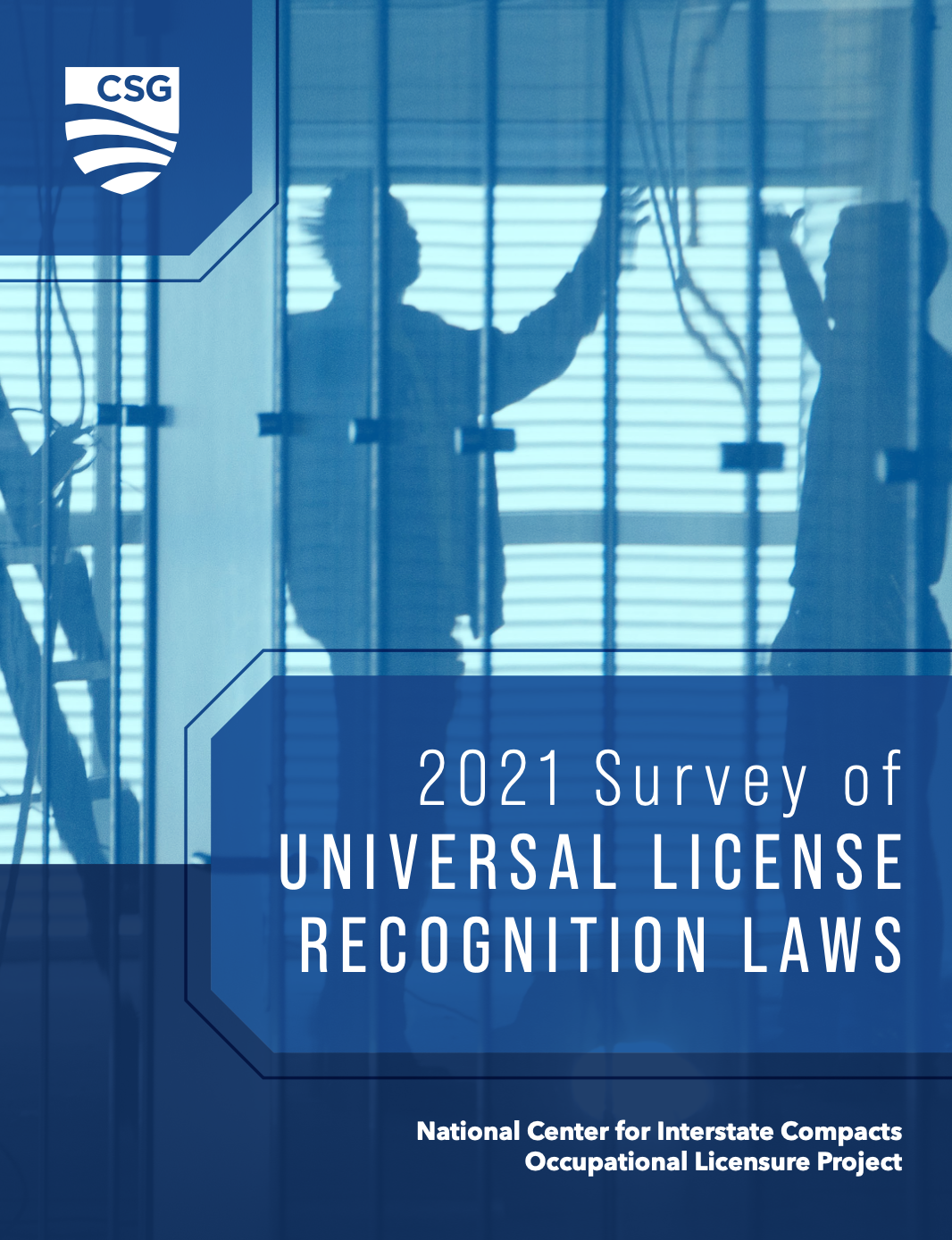
2021 Survey of Universal Recognition Laws
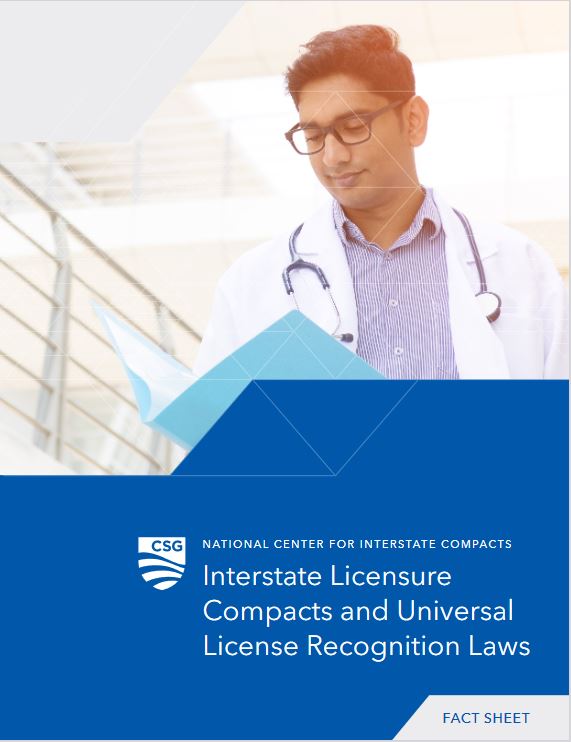
Interstate Licensure Compacts and Universal License Recognition Laws
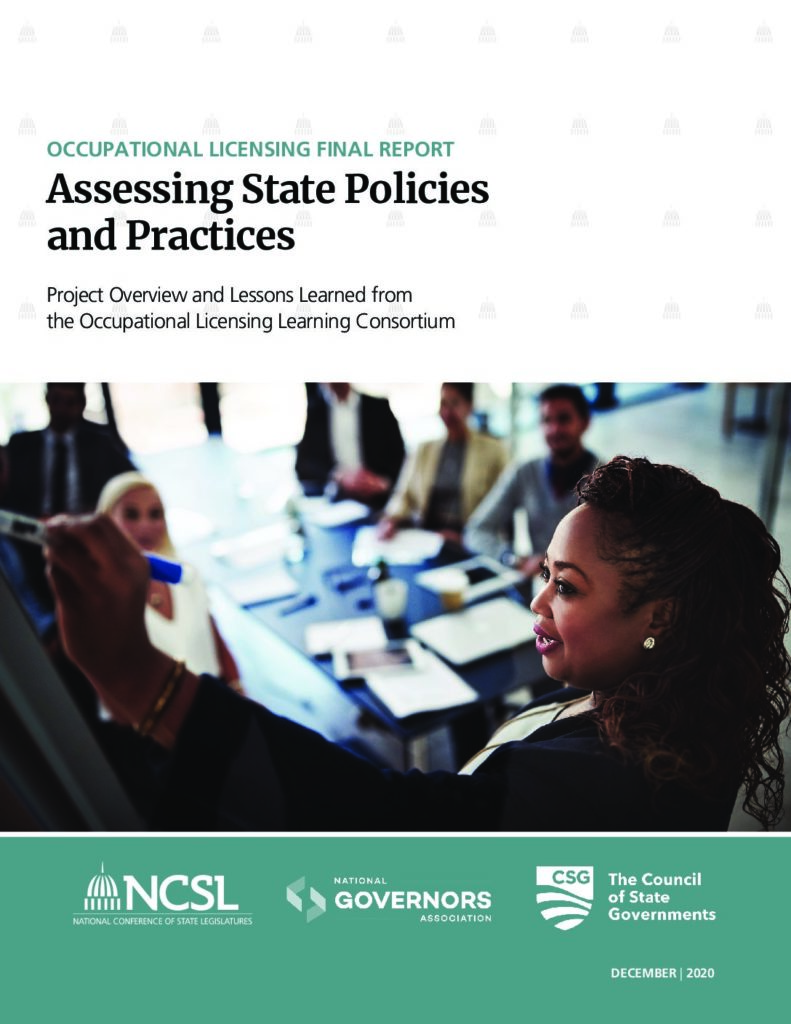
Assessing State Policies and Practices
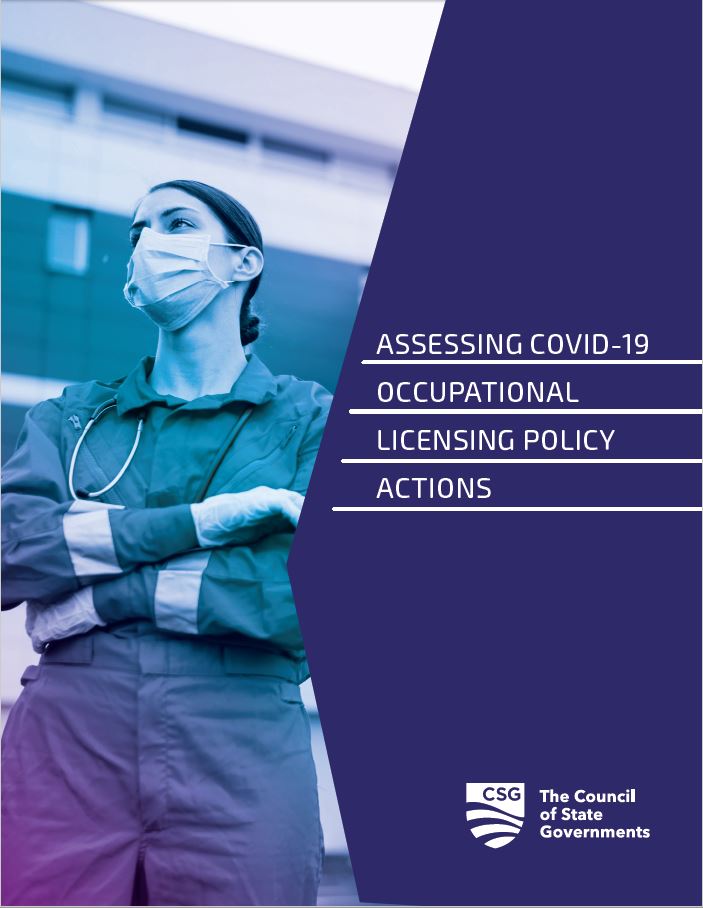
Assessing COVID-19 Occupational Licensing Policy Actions
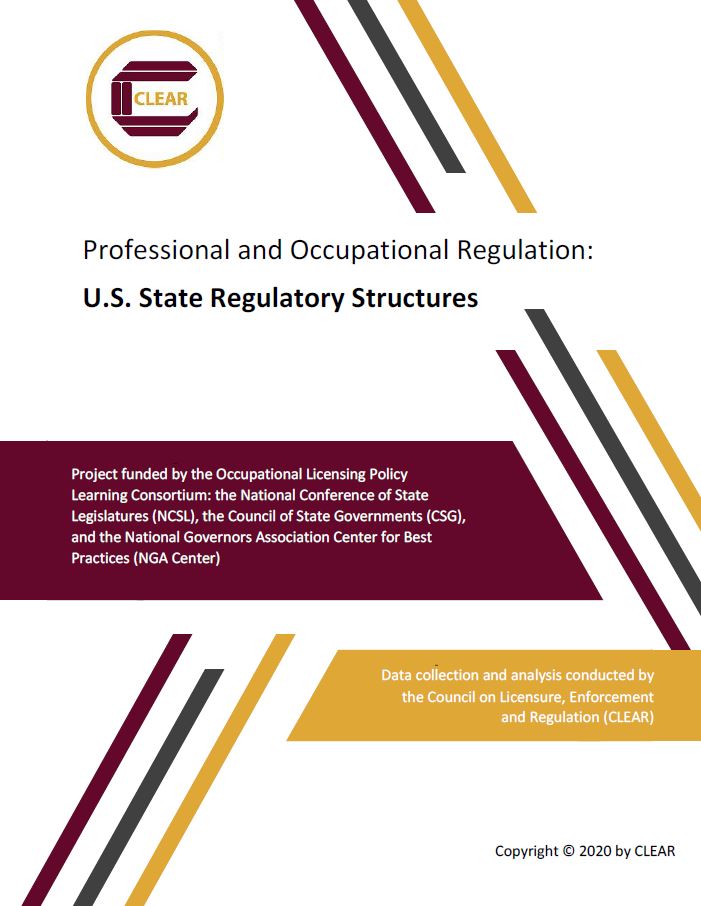
Professional and Occupational Regulation: U.S. State Regulatory Structures

Promising Practices on Occupational Licensing Requirements and Portability Options
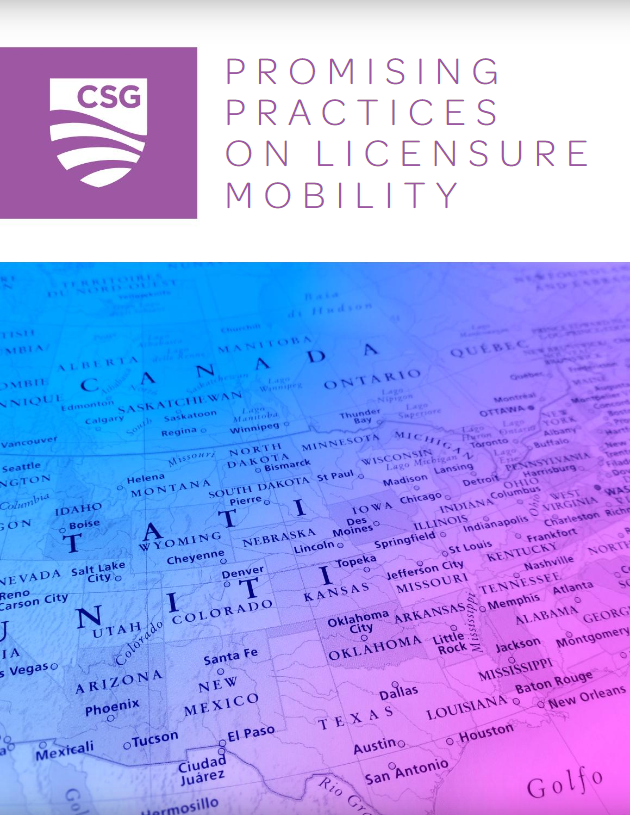
Promising Practices on Licensure Mobility
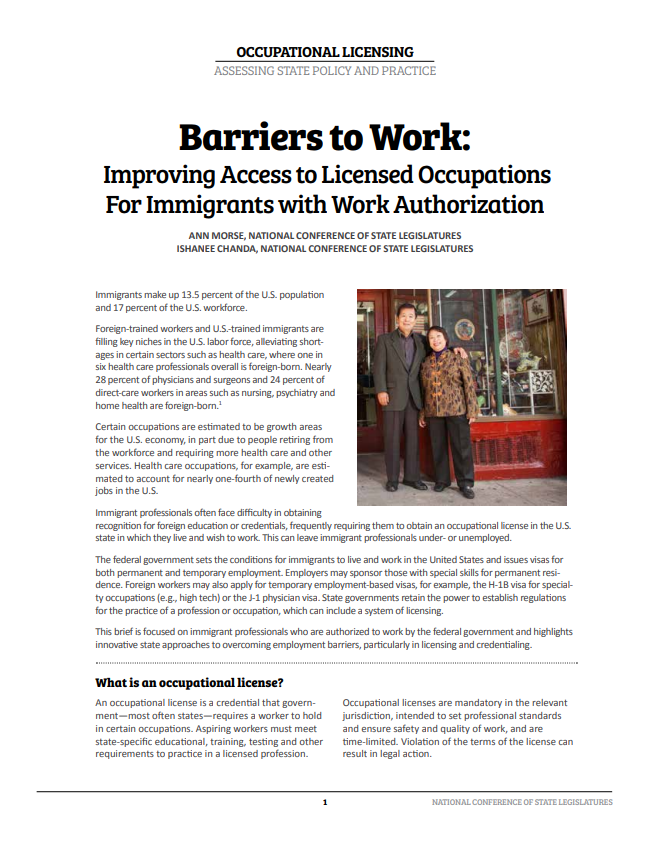
Barriers to Work: Improving Access to Licensed Occupations For Immigrants with Work Authorization

Barriers to Work: Improving Employment in Licensed Occupations for Individuals with Criminal Records
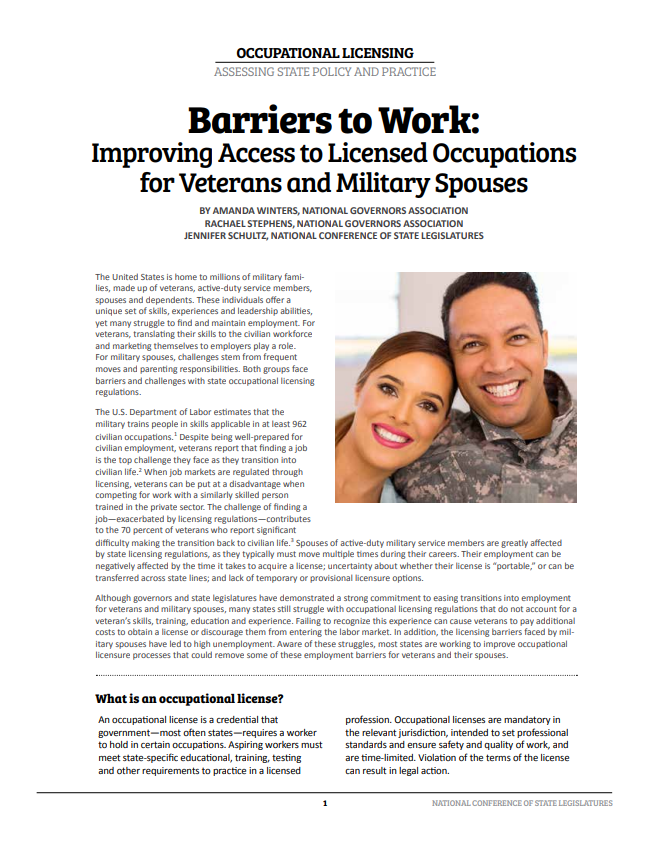
Barriers to Work: Improving Access to Licensed Occupations for Veterans and Military Spouses
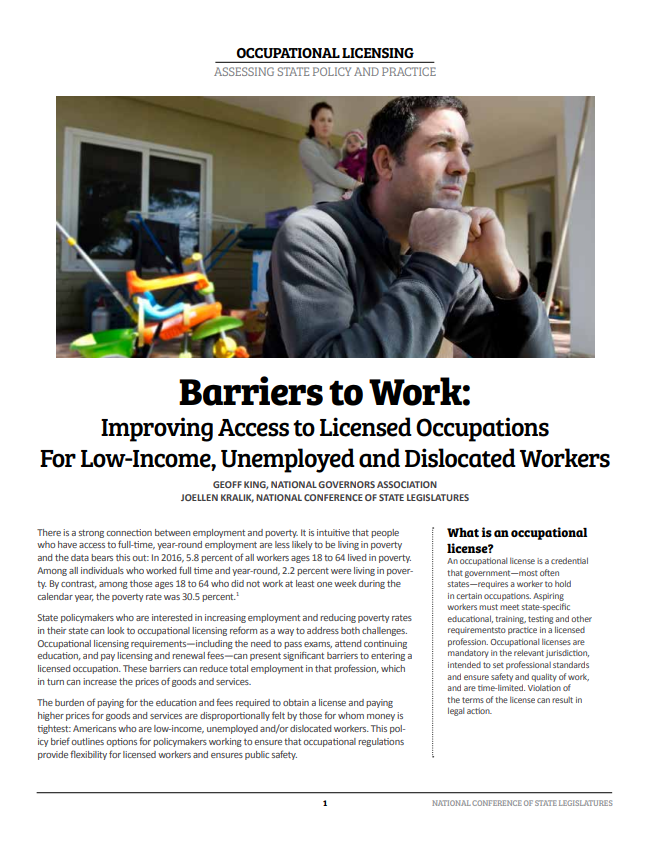
Barriers to Work: Improving Access to Licensed Occupations For Low-Income, Unemployed and Dislocated Workers
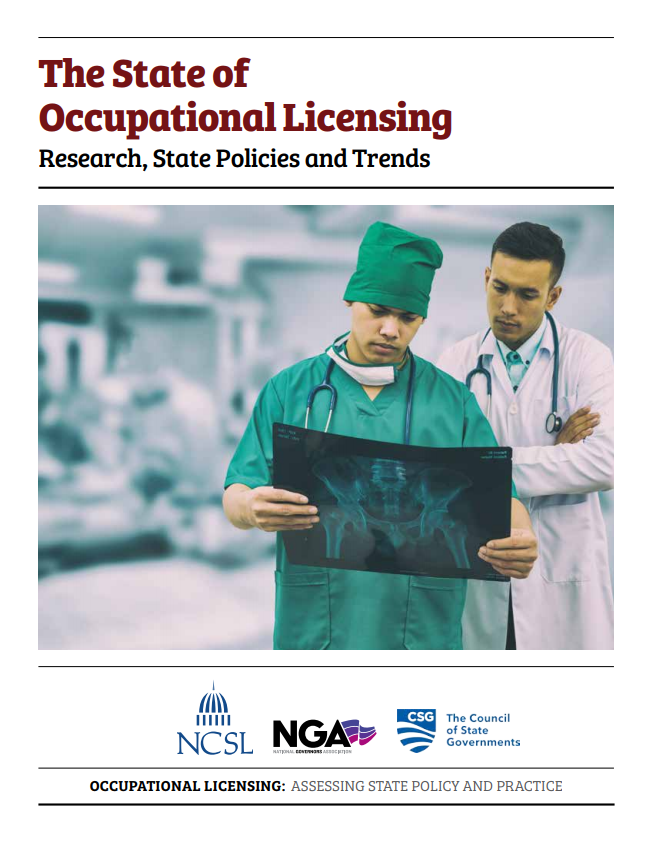
The State of Occupational Licensing Research, State Policies and Trends
Occupational Licensing Literature and State Policy Scan

Occupational licensing has grown dramatically over the years, leading to a larger share of American workers who need a license to perform their work. Accounting for just five percent of the employed population in the 1950’s, licensed workers now comprise more than 25 percent of all employed Americans. Spurred by concerns for public safety, consumer protection or other policy goals, the growth in state licensing over time has created a patchwork of different requirements across states, making it difficult for workers to move their skills across state lines, and costly for them to work in a licensed profession. Read more…
These workforce products were funded by a grant awarded by the U.S. Department of Labor’s Employment and Training Administration. These products were created by the recipients and do not necessarily reflect the official position of the U.S. Department of Labor. The Department of Labor makes no guarantees, warranties, or assurances of any kind, express or implied, with respect to such information, including any information on linked sites and including, but not limited to, accuracy of the information or its completeness, timeliness, usefulness, adequacy, continued availability, or ownership. This product is copyrighted by the institutions that created them.

